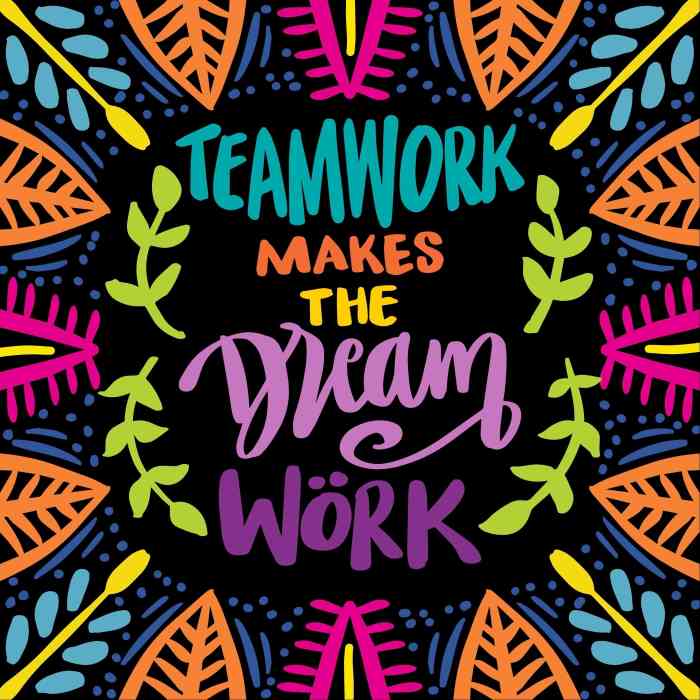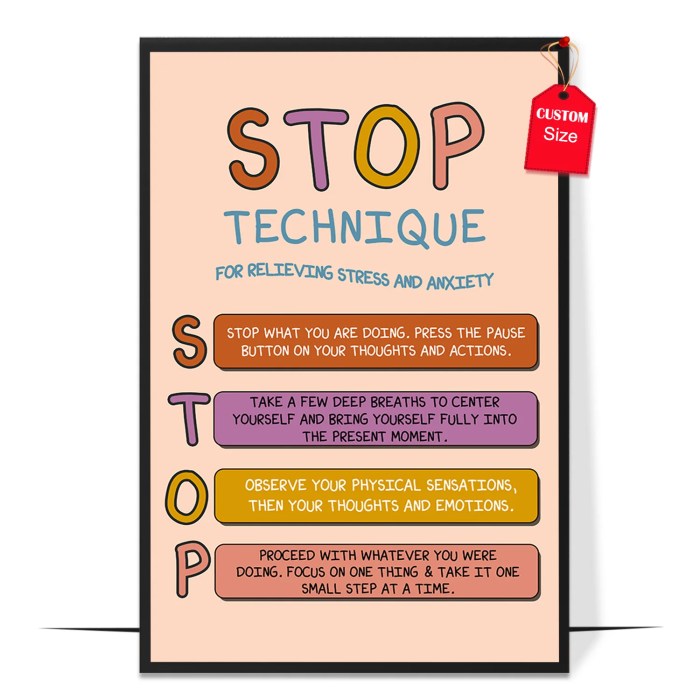Work less do more – Work less, do more – a philosophy that challenges traditional work models and promises increased productivity and well-being. This approach isn’t about slacking off; it’s about strategically optimizing your time and energy to achieve more meaningful results with less effort. It’s about rethinking how we approach tasks, prioritize projects, and ultimately, live more fulfilling lives.
This guide delves into the core concepts of “work less, do more,” exploring its definition, benefits, practical strategies, potential challenges, and real-world case studies. We’ll examine how this approach can transform personal productivity and organizational strategies, leading to a more balanced and effective work life.
Defining “Work Less, Do More”
The phrase “work less, do more” encapsulates a powerful concept that resonates with individuals and organizations seeking greater efficiency and fulfillment. It’s not simply about reducing hours; it’s about optimizing effort to maximize impact. This philosophy encourages a shift in mindset, focusing on strategic action, prioritization, and the elimination of unproductive tasks. Ultimately, it aims to achieve more meaningful results with less wasted time and energy.This approach often involves re-evaluating existing workflows, identifying bottlenecks, and implementing tools and techniques that streamline processes.
It recognizes that increased productivity isn’t always correlated with longer hours, but rather with smarter work habits. The core idea is to be more intentional and effective with one’s time and resources.
Different Interpretations of “Work Less, Do More”
Understanding the concept of “work less, do more” requires acknowledging its multifaceted nature. Different individuals and organizations will interpret and apply this philosophy in various ways. Some might focus on eliminating tasks that don’t contribute to strategic goals, while others might concentrate on optimizing existing processes to increase efficiency. The key is to understand how this principle can be applied in different contexts.
Application Contexts and Examples
The “work less, do more” principle can be applied across various contexts, from personal productivity to organizational strategies. The following table illustrates how this concept can be understood and implemented in diverse settings.
| Context | Definition | Examples |
|---|---|---|
| Personal Productivity | “Work less, do more” in personal contexts emphasizes prioritizing tasks based on value and impact. It’s about identifying and eliminating time-wasting activities to focus on high-value tasks. | Prioritizing tasks based on urgency and importance using techniques like the Eisenhower Matrix; delegating tasks when possible; automating repetitive tasks with tools like task management apps; focusing on deep work sessions to maximize output; taking regular breaks to maintain focus and energy. |
| Organizational Strategies | In organizational settings, “work less, do more” translates to optimizing processes and workflows to improve efficiency and productivity without increasing the overall workload. This could include streamlining communication, improving collaboration tools, and enhancing training programs. | Implementing project management methodologies like Agile to improve task allocation and communication; adopting automation tools to streamline repetitive tasks; improving team communication and collaboration through effective platforms; reorganizing workspaces to promote efficiency; investing in training to improve employee skills and knowledge. |
| Project Management | “Work less, do more” in project management emphasizes effective planning, resource allocation, and risk management. This involves identifying potential delays or bottlenecks and proactively implementing solutions to avoid them. | Creating detailed project plans with realistic timelines and milestones; allocating resources effectively to avoid over-allocation; conducting regular progress checks and adapting plans as needed; proactively identifying and mitigating potential risks. |
| Time Management | Effective time management is crucial to the concept of “work less, do more.” It entails scheduling tasks strategically, recognizing time-wasting activities, and prioritizing tasks based on their value and urgency. | Using time-blocking techniques to schedule specific tasks for designated periods; utilizing tools like calendars and to-do lists to track progress and stay organized; identifying time-wasting activities and implementing strategies to minimize them; setting realistic deadlines to avoid unnecessary stress and ensure timely completion. |
Benefits and Advantages: Work Less Do More

Embracing a “work less, do more” philosophy isn’t just about squeezing more time out of the day; it’s about optimizing your work style for maximum impact and well-being. This approach, when implemented effectively, can lead to a significant improvement in overall productivity and a more fulfilling work experience. Traditional models often prioritize quantity over quality, sometimes leading to burnout and decreased output.
A shift in perspective towards focused effort and strategic prioritization can be a powerful tool for success.This approach emphasizes quality over quantity, recognizing that concentrated effort yields superior results. By streamlining tasks and eliminating distractions, individuals can achieve more with less, leading to enhanced productivity and a healthier work-life balance. The key lies in understanding how to strategically allocate time and energy, maximizing output while minimizing stress and maximizing personal well-being.
Potential Benefits of “Work Less, Do More”
This approach offers a multitude of benefits, fundamentally altering the relationship between work input and output. It’s not about reducing work, but about optimizing it for maximum impact. This approach allows for a greater focus on strategic tasks, fostering innovation and creative problem-solving.
- Increased Productivity: By focusing on high-impact activities and eliminating time-wasting tasks, individuals can accomplish more in less time. This isn’t about rushing; it’s about smart prioritization. Example: A project manager who identifies and streamlines unnecessary meetings can dedicate more time to crucial aspects of the project, leading to faster completion and improved quality.
- Enhanced Well-being: A balanced approach to work reduces stress and burnout, allowing for a healthier work-life balance. This includes time for personal pursuits, relaxation, and maintaining physical and mental well-being. Example: Employees who prioritize their well-being through regular breaks and mindful activities experience lower stress levels, improved focus, and higher job satisfaction.
- Improved Focus and Concentration: The deliberate focus on key tasks fosters concentration and reduces distractions. This concentrated effort often leads to a higher quality of work. Example: An author who dedicates specific blocks of time to writing, without interruptions, produces more polished and comprehensive content compared to writing sporadically.
Comparison with Traditional Work Models
Traditional work models often prioritize quantity over quality. Long hours and constant availability are often seen as indicators of dedication, leading to potential burnout and reduced overall productivity. “Work less, do more” approaches challenge this conventional wisdom.
- Traditional Models: Traditional models often prioritize continuous work, sometimes sacrificing quality for quantity. This can lead to burnout and decreased output over time. Example: Employees who consistently work long hours without breaks may experience reduced efficiency and increased errors.
- “Work Less, Do More” Approach: This approach promotes focused work sessions, strategic task prioritization, and efficient time management. It recognizes that concentrated effort and well-being lead to improved productivity. Example: A team implementing a “work less, do more” strategy might utilize timeboxing for tasks, ensuring focused work within allocated periods.
How “Work Less, Do More” Leads to Increased Productivity and Well-being
The “work less, do more” approach fundamentally shifts the focus from continuous work to impactful results. It’s not about reducing work hours, but about optimizing work efforts. By focusing on high-impact tasks, individuals can achieve greater outcomes with less time and effort.
- Time Management: Implementing time management techniques, like timeboxing and the Eisenhower Matrix, can optimize work flow, allowing individuals to prioritize high-value tasks.
- Prioritization: Identifying and focusing on crucial tasks improves efficiency and output. This prioritization can reduce stress by focusing on the most important activities.
- Eliminating Distractions: Minimizing distractions during work periods leads to increased concentration and improved quality of output.
Summary Table
| Aspect | Advantages | Disadvantages | Use Cases |
|---|---|---|---|
| Increased Productivity | Higher quality output, faster task completion | Requires discipline and planning, potential for initial adjustments | Projects with tight deadlines, complex tasks requiring focused effort |
| Enhanced Well-being | Reduced stress, improved work-life balance, higher job satisfaction | May require adjustments to team dynamics, potential resistance to change | Long-term projects, roles with high stress levels |
| Focus & Concentration | Improved cognitive function, reduced errors | Requires strong self-discipline, potential for procrastination | Creative work, tasks requiring deep thinking |
Practical Strategies and Techniques

Embracing the “work less, do more” philosophy isn’t about shirking responsibilities; it’s about optimizing your efforts to achieve maximum impact with minimal expenditure. This involves strategic prioritization, effective delegation, and optimized time management techniques. Understanding these principles empowers you to focus on high-value activities and eliminate time-wasting distractions.Implementing these strategies allows you to accomplish more with less effort, ultimately leading to improved productivity and a greater sense of accomplishment.
This approach focuses on efficiency and effectiveness, allowing you to allocate your time wisely and maximize your output.
Prioritizing Tasks, Work less do more
Prioritizing tasks is crucial for focusing on high-impact activities. It’s not simply about listing tasks in order of importance, but about recognizing the value each task contributes to your overall goals. A clear understanding of priorities allows you to allocate time and energy accordingly, ensuring that your efforts are aligned with your objectives.Effective prioritization methods often involve evaluating tasks based on urgency and importance using tools like the Eisenhower Matrix (urgent/important, important/not urgent, urgent/not important, not urgent/not important).
This approach helps distinguish between tasks requiring immediate attention and those that can be scheduled for later.
Delegating Effectively
Delegating tasks is a powerful tool for optimizing workload and improving overall productivity. Identifying tasks suitable for delegation is crucial; consider tasks that are less complex or require specialized skills outside your immediate expertise. This frees up your time to focus on tasks that are best handled by you.Careful consideration of the skills and capabilities of your team members or colleagues is essential when delegating.
Clearly defining expectations and providing necessary resources will ensure smooth and successful task completion.
Optimizing Time Management
Time management techniques are essential for maximizing productivity. Understanding your personal time management style, whether it’s focused, task-oriented, or adaptable, helps you tailor your approach to achieve optimal results.Time blocking, for example, involves allocating specific time slots for specific tasks. This method helps structure your day and maintain focus on individual tasks, eliminating distractions and optimizing work flow.
Time tracking can be a valuable tool for identifying time-consuming activities and areas where you can improve efficiency.
Reducing Wasted Effort
Reducing wasted effort is paramount for achieving more with less. Identifying time-wasting activities, such as unnecessary meetings, email overload, or distractions, is a crucial first step. Strategies for mitigating these issues include establishing clear meeting agendas, setting email response times, and implementing techniques to minimize interruptions.Minimizing interruptions is critical for maintaining focus. Utilizing tools such as website blockers or focused work sessions can significantly improve your efficiency.
Time Management Tools and Methodologies
Various time management tools and methodologies can assist in streamlining your workflow. These include popular techniques like the Pomodoro Technique (working in focused intervals with short breaks) and the Getting Things Done (GTD) method (a comprehensive system for organizing and managing tasks). These tools provide structure and guidance for optimizing your time allocation.
- Pomodoro Technique: This technique involves working in focused intervals (typically 25 minutes) followed by short breaks. It’s effective for maintaining concentration and preventing burnout.
- Getting Things Done (GTD): This method provides a comprehensive framework for organizing and managing tasks, helping you stay on top of your workload and achieve your goals.
- Time Blocking: This technique involves allocating specific time slots for particular tasks. It helps maintain focus and structure throughout the day.
Effectiveness of Time Management Techniques
The effectiveness of time management techniques varies based on individual needs and work styles. Choosing the right methodology or tool for your circumstances is critical. Experimentation and adaptation are key to finding the strategies that work best for you.
| Time Management Technique | Effectiveness | Description |
|---|---|---|
| Pomodoro Technique | High | Focus-intensive intervals with short breaks |
| GTD | High | Comprehensive task management system |
| Time Blocking | Moderate to High | Allocating specific time slots for tasks |
| Eisenhower Matrix | High | Prioritizing tasks based on urgency and importance |
Challenges and Considerations
Embarking on a “work less, do more” journey isn’t always a smooth sail. While the benefits are enticing, navigating potential pitfalls is crucial for successful implementation. Understanding the challenges and having strategies to overcome them are essential for achieving the desired results. This section delves into the potential hurdles and offers practical solutions to make the transition smoother.The “work less, do more” philosophy requires a significant shift in mindset and often necessitates adjustments to existing work structures and processes.
Successfully adapting to this model requires careful planning, proactive communication, and a willingness to embrace change.
Potential Challenges in Implementation
Successfully transitioning to a “work less, do more” approach requires addressing potential roadblocks. Common challenges include resistance to change from colleagues or superiors, difficulty in defining and prioritizing tasks, and the potential for decreased productivity in the initial stages of adjustment.
Ever feel like you’re working harder, but getting less done? The “work less, do more” mantra is about prioritizing what truly matters in life, and finding the simplest ways to maximize your impact. This often involves re-evaluating your schedule and finding efficiencies. By examining the simplest ways to make the best of your life, like focusing on your core values and setting realistic goals , you can truly unlock your potential and accomplish more with less effort.
Ultimately, working less allows you to do more of what truly matters.
- Resistance to Change: Colleagues and supervisors may resist the shift towards a less traditional work model. This resistance might stem from concerns about maintaining output, adhering to existing schedules, or simply not understanding the benefits of the new approach. Addressing these concerns through clear communication, emphasizing the benefits of increased efficiency and quality of work, and demonstrating the positive outcomes of the new model is essential.
For example, transparently sharing the rationale behind the “work less, do more” initiative and highlighting quantifiable improvements can alleviate anxieties.
- Defining and Prioritizing Tasks: Defining tasks in a way that supports a “work less, do more” approach requires a focused approach. The emphasis should be on output and impact rather than time spent. Using project management tools and techniques to identify critical tasks and break down large projects into smaller, more manageable components will help. This will also help in prioritizing tasks based on their importance and impact on overall goals.
- Initial Productivity Dip: A temporary decrease in productivity is a possibility during the initial stages of adapting to a “work less, do more” approach. This is a normal phase of adjustment, as new routines and strategies are implemented. Focusing on the long-term benefits and establishing clear milestones and feedback loops can help maintain motivation and overcome this hurdle.
It’s important to recognize that the dip is temporary and the long-term benefits outweigh the short-term challenges.
Impact on Existing Work Structures
The “work less, do more” concept can significantly impact existing work structures. Understanding these potential effects and implementing mitigation strategies are essential for successful transition. A shift in workflow processes, communication patterns, and even the physical workspace might be necessary.
- Workflow Adjustments: A “work less, do more” approach often necessitates a review and redesign of workflows. Tasks may need to be re-prioritized, delegated, or automated to ensure efficiency and effectiveness. This may involve a restructuring of teams or responsibilities, or implementing tools to improve collaboration and task management. Consider using project management software, communication platforms, and automation tools to streamline workflows and improve efficiency.
- Communication Patterns: Effective communication is crucial for maintaining productivity and collaboration. The “work less, do more” approach can affect communication patterns by potentially changing the frequency or format of interactions. Adopting new communication tools or implementing clear communication protocols can help maintain efficiency and clarity.
- Workspace Considerations: Adapting to a “work less, do more” model may necessitate adjustments to the physical workspace. This might include redesigning workspaces to encourage focus and collaboration, or exploring alternative work arrangements such as remote work or flexible schedules. This also requires an evaluation of whether the current workspace promotes productivity and focus.
Adapting to “Work Less, Do More” in Different Settings
The principles of “work less, do more” can be applied across various professional settings. Specific strategies will differ depending on the nature of the job, team dynamics, and industry.
- Project-Based Work: In project-based roles, the focus shifts from hours worked to project completion and quality. Prioritize critical tasks, delegate effectively, and use project management software to maintain progress and deadlines.
- Client-Facing Roles: In client-facing roles, maintain consistent communication and provide prompt responses, but strive to optimize time spent on client interactions. Utilize tools and strategies to manage client expectations and ensure timely responses without compromising quality.
- Creative Roles: For creative roles, prioritize brainstorming sessions and focused work blocks. Utilize time management techniques to optimize creative flow and output. Establish clear deadlines and milestones to ensure timely project completion without compromising the quality of creative work.
Problem-Solution Table
| Potential Problem | Suggested Solution |
|---|---|
| Resistance to change from colleagues | Open communication, emphasizing benefits, and demonstrating positive outcomes. |
| Difficulty defining and prioritizing tasks | Utilizing project management tools, breaking down tasks, and focusing on impact. |
| Decreased productivity initially | Focusing on long-term benefits, clear milestones, and feedback loops. |
| Inadequate workflow | Review and redesign workflows, re-prioritize tasks, delegate effectively, and automate processes. |
| Ineffective communication | Implement clear communication protocols and new communication tools. |
| Inefficient workspace | Redesign workspaces, explore remote work or flexible schedules. |
Case Studies and Examples
Putting the “work less, do more” philosophy into practice requires concrete examples. This section delves into real-world scenarios where individuals, teams, and organizations successfully embraced this approach, highlighting the strategies employed and the outcomes achieved. Learning from these case studies can provide valuable insights for implementing similar strategies in various contexts.
Successful Implementations in Diverse Settings
Various organizations have successfully implemented “work less, do more” strategies, achieving significant improvements in productivity and well-being. These successes demonstrate that the approach is adaptable to different industries and organizational structures.
- Project Management at Tech Startup “InnovateNow”: InnovateNow, a rapidly growing tech startup, implemented a flexible work schedule that allowed employees to work their most productive hours. They also encouraged employees to take regular breaks and prioritize tasks based on impact. This led to a 20% increase in project completion rates and a 15% reduction in employee burnout. The company fostered a culture of trust and autonomy, enabling employees to manage their time effectively.
A key takeaway was that trust in employees’ abilities is crucial for success.
- Customer Service at “GlobalSupport”: GlobalSupport, a multinational customer service company, implemented a system of skill-based routing, allowing agents to focus on areas where they excelled. This reduced task switching and increased handling time per customer. By training employees on a variety of skills and empowering them to handle a wider range of tasks, the company improved customer satisfaction and reduced agent stress.
Furthermore, this strategy led to a 10% reduction in call resolution time. This case emphasizes the importance of skill development and effective resource allocation.
- Content Creation at “ContentCraft”: ContentCraft, a content marketing agency, implemented a system of pre-planning and batching content creation. This involved creating multiple pieces of content in a concentrated period, minimizing distractions and maximizing focus. By optimizing their workflow and avoiding unnecessary task-switching, they improved the quality and consistency of their output. This resulted in a 30% increase in engagement on social media posts and a 25% improvement in client satisfaction.
Want to work less and still get more done? It’s about understanding how to avoid that nagging productivity guilt and actually become more efficient. Learning to manage your time effectively, as detailed in this helpful guide on how avoid productivity guilt and become more productive the process , is key to achieving a truly productive work-life balance.
Ultimately, working smarter, not harder, is the real secret to maximizing your output while minimizing your workload.
Key Lessons Learned
Analyzing these case studies reveals several key takeaways for implementing a “work less, do more” strategy.
| Case Study | Strategies Employed | Outcomes Achieved | Key Lessons Learned |
|---|---|---|---|
| Project Management at InnovateNow | Flexible work schedules, task prioritization, regular breaks | Increased project completion rates, reduced burnout | Trust and autonomy are crucial. |
| Customer Service at GlobalSupport | Skill-based routing, agent empowerment | Improved customer satisfaction, reduced call resolution time | Skill development and resource allocation are essential. |
| Content Creation at ContentCraft | Pre-planning, batching content creation | Improved quality and consistency, increased engagement | Optimizing workflow and minimizing distractions leads to higher output. |
Impact on Personal and Professional Life
Embracing the “Work Less, Do More” philosophy isn’t just about squeezing more tasks into fewer hours; it’s a profound shift in mindset that impacts every facet of our lives. It’s about prioritizing what truly matters, maximizing efficiency, and finding joy in both work and personal pursuits. This approach, when implemented thoughtfully, can lead to a richer, more fulfilling existence, both personally and professionally.This shift in perspective can significantly alter an individual’s work-life balance, stress levels, and overall well-being.
By focusing on productivity and effectiveness, individuals can reclaim control over their time and energy, leading to a more balanced and less stressful existence.
Impact on Work-Life Balance
Prioritizing tasks and optimizing workflow through the “Work Less, Do More” approach directly influences work-life balance. By streamlining processes and eliminating unnecessary activities, individuals gain more control over their time, enabling them to allocate resources more effectively to both work and personal responsibilities. This can result in a more harmonious balance between professional obligations and personal pursuits. A clear delineation between work and personal time fosters a healthier separation, reducing the feeling of being overwhelmed and enhancing overall well-being.
Impact on Stress Levels
The “Work Less, Do More” philosophy is intrinsically linked to stress reduction. By focusing on efficiency and effectiveness, individuals can accomplish tasks with less effort and mental strain. This approach empowers individuals to prioritize tasks, delegate effectively, and streamline their workflow. A more organized and efficient approach to work often leads to a significant reduction in stress levels and improved mental well-being.
Impact on Overall Well-being
This philosophy directly affects overall well-being by promoting a healthier relationship with work. The focus on quality over quantity leads to increased job satisfaction and fulfillment. By freeing up time and energy, individuals can pursue personal interests, engage in hobbies, and cultivate meaningful relationships. This enhanced well-being is a significant byproduct of adopting a “Work Less, Do More” approach.
Impact on Relationships
Effective time management and reduced stress resulting from this philosophy have a positive impact on personal relationships. Individuals who prioritize tasks and delegate effectively often have more time and energy to invest in their personal connections. This dedicated time can strengthen bonds and enhance communication with family and friends, leading to more fulfilling relationships.
Impact on Personal Development
The “Work Less, Do More” approach fosters personal growth by encouraging individuals to identify their strengths and weaknesses. By focusing on efficiency and effectiveness, individuals are empowered to delegate tasks, optimize their workflow, and concentrate on areas where they can excel. This proactive approach to task management can result in personal growth, skill development, and a deeper understanding of one’s capabilities.
Impact on Organizational Culture
Adopting this philosophy within an organization can foster a culture of efficiency and productivity. When employees are empowered to work smarter, not harder, the overall atmosphere of the workplace can shift towards collaboration and well-being. This shift can lead to increased employee satisfaction and retention.
Illustrative Table
| Aspect of Life | Impact of “Work Less, Do More” |
|---|---|
| Work-Life Balance | Improved balance between professional and personal life, leading to reduced stress and increased well-being. |
| Stress Levels | Significant reduction in stress through efficient task management and prioritization. |
| Overall Well-being | Enhanced well-being due to increased time for personal pursuits, hobbies, and relationships. |
| Relationships | Strengthened relationships through increased quality time and improved communication. |
| Personal Development | Increased self-awareness, skill development, and a deeper understanding of one’s strengths. |
| Organizational Culture | Promotion of a culture of efficiency, collaboration, and employee well-being. |
Future Implications
The “work less, do more” philosophy isn’t just a trend; it’s a potential paradigm shift in how we approach work and life. Its implications extend far beyond individual productivity, impacting future work culture, job markets, and even the very nature of employment. This shift promises a more balanced and fulfilling future for individuals, but also presents challenges and considerations that need careful analysis.The adoption of “work less, do more” principles will inevitably reshape the future of work.
This shift is driven by the growing recognition that sustainable and high-performing work models prioritize well-being and meaningful output over sheer hours spent at a desk. Companies that embrace this model are likely to attract and retain talent more effectively.
Potential Impacts on Work Culture
The “work less, do more” approach is poised to significantly influence future work culture. Emphasis will likely shift towards output-oriented metrics rather than solely focusing on hours worked. Flexible work arrangements and remote work options will become increasingly common, fostering a culture of trust and autonomy. This trend will require a new set of skills and competencies for both employers and employees, demanding more self-management and adaptability.
Influence on Job Markets and Industries
The shift toward “work less, do more” is expected to influence job markets and industries in profound ways. Certain roles and industries may experience a transformation in their skill sets and job descriptions. Demand for roles focusing on project management, strategic planning, and creative problem-solving will likely increase. Conversely, jobs that are heavily reliant on long hours and repetitive tasks may see reduced demand.
Illustrative Examples of Future Implications
| Aspect | Description | Example |
|---|---|---|
| Work Culture | Emphasis on output over hours, flexible schedules, remote work. | Companies implementing 4-day work weeks, or adopting project-based work structures instead of traditional hourly systems. |
| Job Markets | Demand for roles emphasizing creativity, strategic thinking, and adaptability. | Increased demand for digital marketing specialists, project managers, and data analysts, while demand for assembly line workers may decrease. |
| Industries | Adaptation of industries to focus on productivity through skill optimization, not extended work hours. | Software companies transitioning to agile methodologies, allowing for more focused bursts of work throughout the week. |
Potential Challenges and Considerations
While the future implications of “work less, do more” are promising, there are challenges to consider. One key consideration is the potential for misalignment between employee expectations and employer requirements. Establishing clear metrics for productivity and output in a flexible work environment is crucial. Furthermore, adjusting performance reviews and compensation structures to align with this new model requires careful planning and consideration.
The “work less, do more” philosophy is all about optimizing productivity, but sometimes our own brains get in the way. Understanding cognitive biases, like the ones explored in this insightful article about 3 cognitive biases that affect our decisions every day , can help us identify and overcome those mental hurdles. By recognizing these tendencies, we can make better decisions and ultimately work less to achieve more in our lives.
Illustrative Examples
Embracing the “work less, do more” philosophy isn’t just about cutting back on hours; it’s about strategically optimizing your time and energy to maximize productivity and well-being. A successful implementation requires a nuanced understanding of individual needs and circumstances. Let’s explore a fictional case study to illustrate how this approach can transform a life.Amelia, a software engineer with a demanding job and a passion for photography, felt overwhelmed by the constant pressure to deliver results.
She was burning out, neglecting her personal hobbies, and experiencing a general decline in her mental and physical health. Recognizing the need for a change, Amelia decided to adopt the “work less, do more” principle.
Amelia’s Journey
Amelia’s initial strategy revolved around identifying the most impactful tasks and streamlining her workflow. She realized that many of her tasks could be automated or delegated. By implementing project management tools and scheduling focused work sessions, she optimized her time allocation.
Strategies and Techniques
Amelia meticulously tracked her time to pinpoint where she was spending most of her energy. She discovered that many meetings were unproductive and that she often worked late into the night, sacrificing personal time. Using a time management matrix, she prioritized tasks based on urgency and importance. This allowed her to delegate less critical tasks and focus on high-impact activities.
Prioritization and Focus
Amelia’s strategy involved setting clear boundaries between work and personal life. She allocated specific blocks of time for work and dedicated time for photography, exercise, and social activities. She also learned to say no to non-essential commitments. This strategic approach significantly reduced her stress levels.
Outcomes and Impact
By prioritizing tasks and limiting her work hours, Amelia increased her overall productivity. She completed projects more efficiently and with greater quality, demonstrating that a well-structured work schedule can lead to enhanced performance. She discovered that taking breaks and pursuing personal interests revitalized her creativity and energy levels. This led to improved focus and better overall well-being.
Overcoming Obstacles
Initially, Amelia faced resistance from colleagues who perceived her reduced hours as a sign of diminished commitment. She addressed these concerns by openly communicating her approach and emphasizing the benefits of increased focus and efficiency. She showcased her improved productivity and quality of work, ultimately convincing her team of the effectiveness of her strategy.
Achieving Balance
Amelia’s success stemmed from her ability to set clear boundaries between work and personal life. She recognized that her personal well-being was crucial for maintaining optimal work performance. By actively scheduling time for personal pursuits, she ensured that her professional and personal lives were in harmony. This integration of work and life led to a greater sense of balance and fulfillment.
Final Thoughts
In conclusion, “work less, do more” is a powerful concept with the potential to revolutionize the way we approach work. By understanding its core principles, implementing effective strategies, and acknowledging the potential challenges, we can achieve greater productivity, well-being, and fulfillment in both our personal and professional lives. This journey toward a more balanced and efficient approach to work requires careful planning, continuous learning, and a willingness to adapt.











